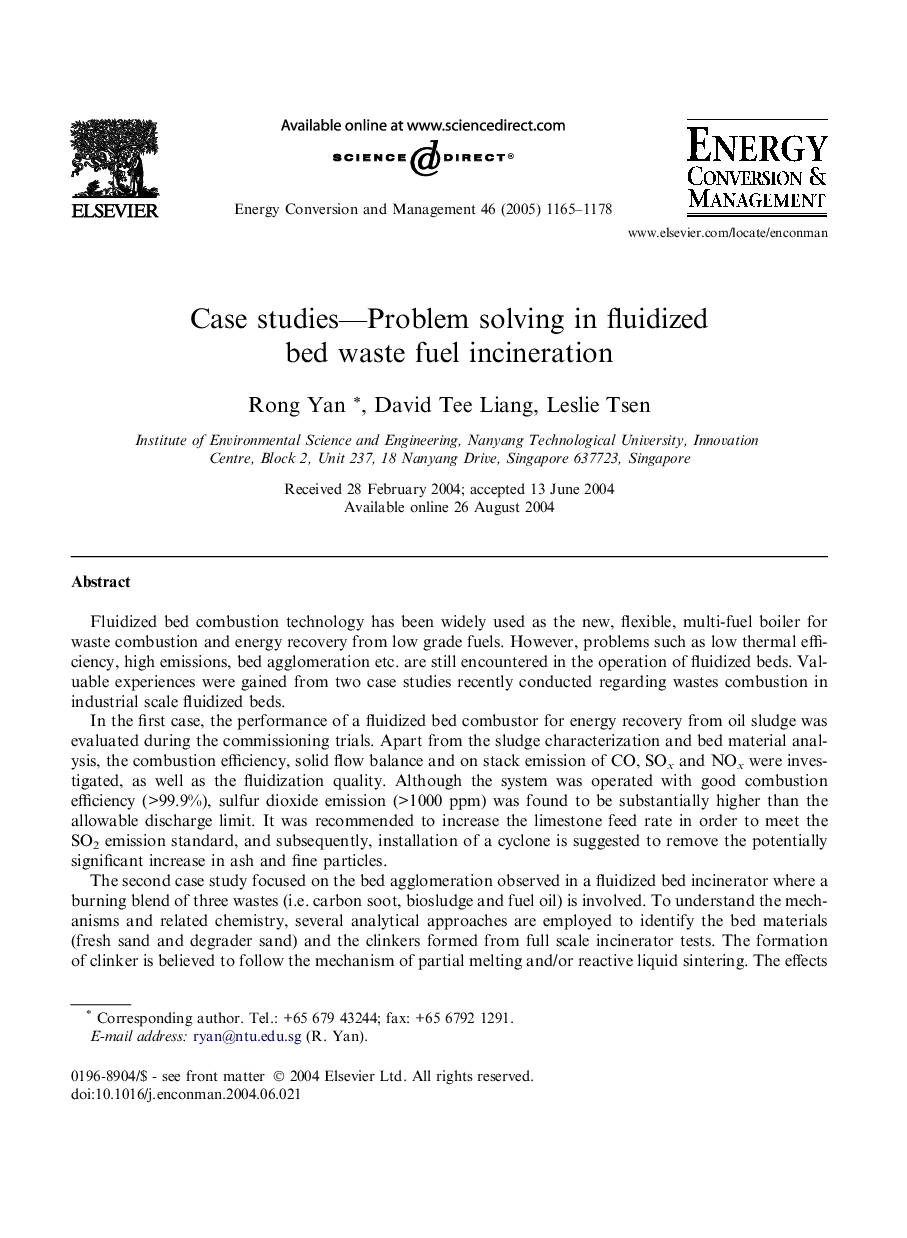| Article ID | Journal | Published Year | Pages | File Type |
|---|---|---|---|---|
| 9702790 | Energy Conversion and Management | 2005 | 14 Pages |
Abstract
The second case study focused on the bed agglomeration observed in a fluidized bed incinerator where a burning blend of three wastes (i.e. carbon soot, biosludge and fuel oil) is involved. To understand the mechanisms and related chemistry, several analytical approaches are employed to identify the bed materials (fresh sand and degrader sand) and the clinkers formed from full scale incinerator tests. The formation of clinker is believed to follow the mechanism of partial melting and/or reactive liquid sintering. The effects of temperature and blending ratio are tested in a muffle furnace. Carbon soot is believed to be more susceptible than the other two fuels. Thermodynamic multi-phase multi-component equilibrium (TPCE) calculations predict that the main low melting point species are predominant under the oxidizing condition, suggesting that reducing conditions might be favorable to restrain bed agglomeration. This study provides valuable information for better understanding of the chemistry related to clinker formation; it also helps in developing methods for control and possible elimination of the bed agglomeration problem for the design fuels.
Related Topics
Physical Sciences and Engineering
Energy
Energy (General)
Authors
Rong Yan, David Tee Liang, Leslie Tsen,
